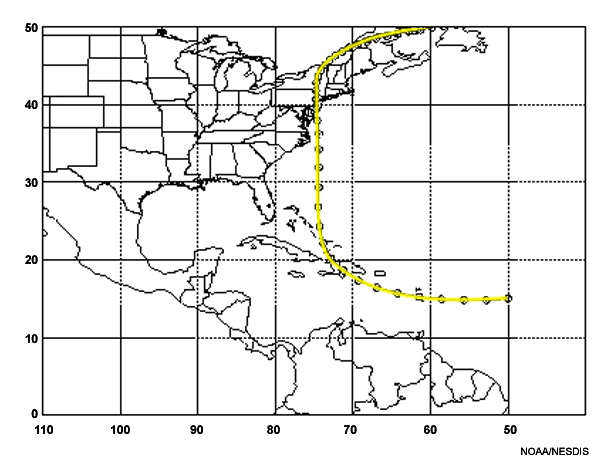From our two examples, you can understand how a fairly small change in the position of the lows and highs will change what coastal areas have to be evacuated. Also, different inland areas would experience the torrential rains that can accompany these storms. In the first example, the storm was predicted to travel over the entire central United States and parts of Canada, while in the second, it would affect areas primarily from New York and Pennsylvania through New England and Canada. This rain, and possibly flooding, would also be something that weather forecasters, emergency managers, and the general public would need to watch out for.
